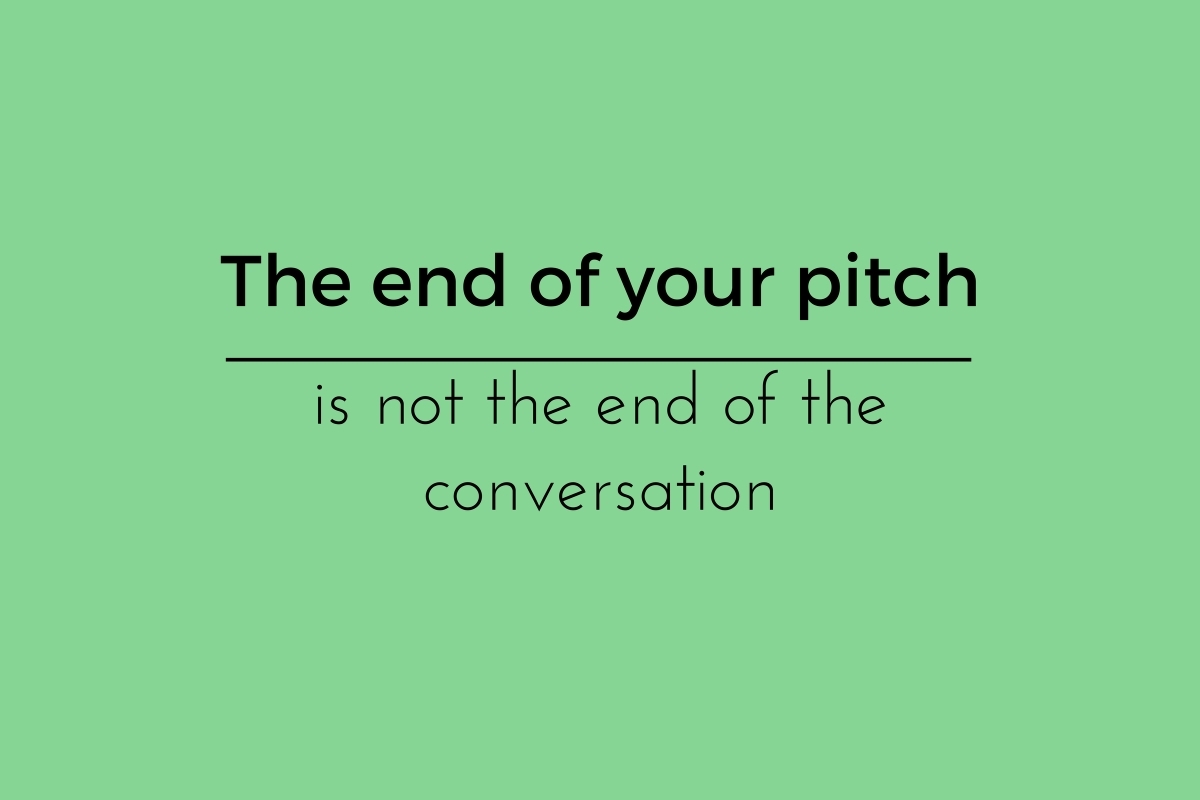We’ve touched on the topic of how to end your pitch in regards to how you make it memorable before, but there’s another thing to consider with the ending of your pitch. It’s actually pretty straightforward when you think of it – you need to remember, that usually, the end of your pitch is not the end of the conversation.
This means that you want to make sure not to “close up” with the ending of your pitch. On the contrary, you want to open a door and try your best to invite the one(s) you’re pitching to a dialogue or conversation.
The aim of the pitch is to get a response of some kind. It could be a sale, an investment, feedback, a contact or a bunch of other things. But you want some kind of reaction from your pitch, and the end of your pitch should reflect that.
Now, the goals, the audience, and the circumstances can be a million different things, so it’s hard for us to give you rock solid advice, but keep these two things in mind:
Keep it open
Open, inviting questions often start with ‘wh’ in the form of ‘what’, ‘who’, ‘which’ and so on. This type of question is an opener because it’s hard to shut down your question with a simple ‘yes’ or ‘no’. It takes more words to answer these questions, and that gives you a better chance of keeping the conversation going.
An example could be the following, which allows your audience to dream and imagine themselves choosing between an ineffective solution and a better, albeit fictitious, alternative:
“The next time you’re at Walmart, ask yourself: Why do even need this plastic bag now that I know that BioBag is a better alternative? Thanks.”
The open questions also include the audience into your pitch, or it gives them the feeling, that they’re welcome, and that you’re interested in them. Just about any purpose, you have with the pitch would benefit from this approach. The employer wants to know why you picked them for a reason, and the same goes for the investor, who wants to know why you want to work with them.
Keep it safe
When I say keep it safe, I could also have said keep it non-committing. Being too aggressive can make the one(s) you’re pitching to back off, so don’t go asking for that million dollar funding right off the bat! Mostly there will be questions about elements of your pitch, and by asking a question and inviting to a dialogue you’re sending the signal that you’re looking for the right fit. That sound a lot more positive and constructive than just looking for a sale or an investment, right? An example on the more cautious side could sound like this:
“Now that you’ve heard a bit about me, I’d love to know: If you find me interesting, when would it be possible for us to have our next meeting together?”
Not looking for a commitment to anything right away is also a courtesy to the one(s) you’re pitching to. Maybe they aren’t in a position to make that commitment right away, and asking for that commitment will only give them one real option – to say no to you. Giving them a chance to find out what they need – from you or others afterward – means they get the chance to see, how well you fit in their plans. And that’s hopefully really well!


